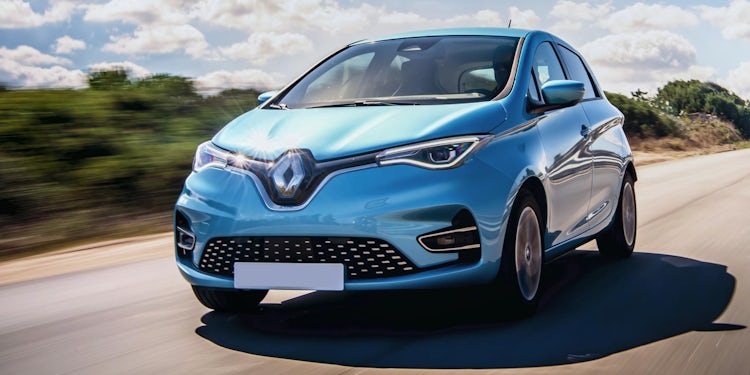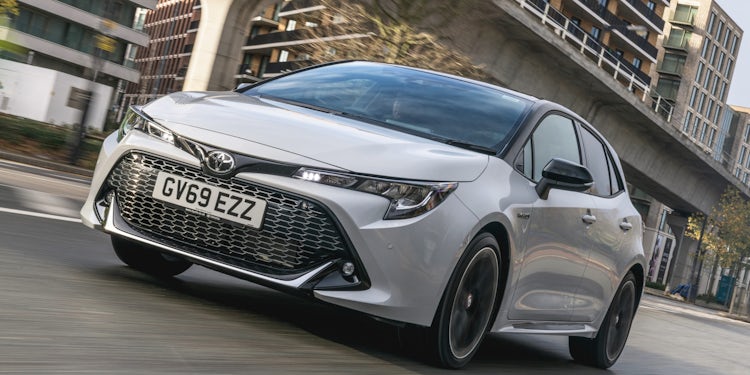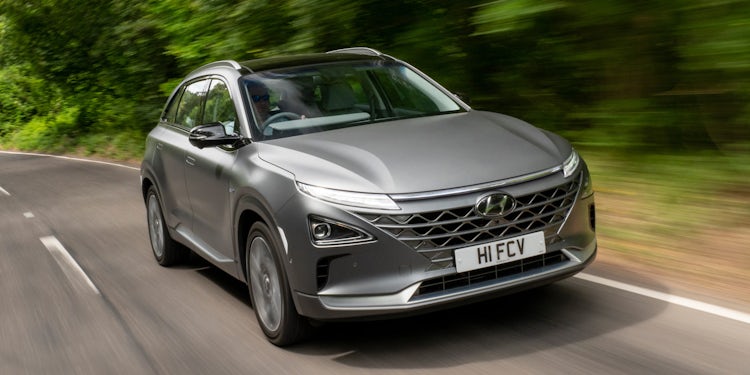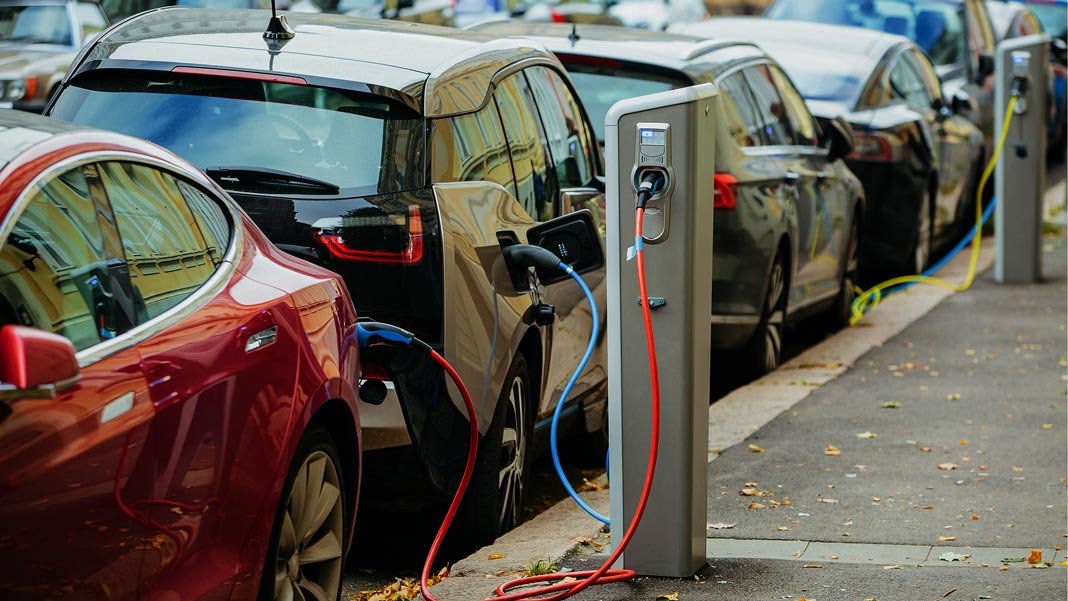Read The Full Article On: Carwow
You may hear that electric cars are the future, but electrified cars are already with us, and have been for a long time. But there’s a big difference between a partially electrified car and a fully electric one, and that’s before you even consider the various stages in between.
In this advice guide you’ll find out what the different types of electric and electrified cars are, how they work, and the advantages and disadvantages of each type. That should help you decide which of these electrified options suits your lifestyle best.
What is an EV?

An EV (Electric Vehicle) is a car that runs solely on electricity that’s stored in an on-board battery that you charge up using a cable. Sometimes it’s referred to as a BEV (Battery Electric Vehicle) but is most commonly known as an electric car.
It doesn’t have a conventional petrol or diesel engine and doesn’t use any other type of fuel. That means zero emissions from the car itself (although the power stations that produce the electricity you put in could well produce plenty), and because electricity costs a lot less than petrol and diesel, ‘filling up’ your car is far cheaper, especially if you charge your car overnight when electricity can cost less.
You’re also likely to pay much less in tax on an electric car, and in many cases, you’ll be exempt from various taxes altogether. On the road, meanwhile, electric cars tend to be quick, quiet and easy to drive. Just look at offerings like the Tesla Model 3 and Jaguar i-Pace for proof.
EVs won’t suit everyone, though, especially those who regularly cover long distances. Electric cars tend to have a shorter range – the maximum distance you can drive on a full battery or tank of fuel – than conventional cars, and because it takes much longer to charge a battery than it does to put fuel in a tank, charging mid-journey could pose numerous problems. For instance, what if you can’t find a conveniently located charge point? Or if you can, what if it’s not powerful enough for your needs? Or if it is, what if it’s run by a company you’re not signed up to? Or when you rock up, it’s already occupied?
Also bear in mind that, despite the lower running costs, electric vehicles generally cost a lot more to buy in the first place.
What is a PHEV?

Just like an EV, a PHEV – or Plug-in Hybrid Electric Vehicle – has an on-board battery that supplies power to an electric motor to drive the wheels, which is topped-up by plugging the car in. That battery is usually smaller and has a lower capacity than ones found in electric cars, which means plug-in vehicles can’t drive anywhere near as far on electricity alone – around 30 miles in most cases, including the Volkswagen Golf GTE and Mitsubishi Outlander PHEV. But they do have an extra trick up their sleeve.
Plug-in vehicles also have a combustion engine that kicks in once the battery runs out of charge. It’s used to generate more electricity to recharge the battery, or drive the wheels, or a combination of both.
This means many drivers will be able to do their commute on electric power alone Monday to Friday, provided they plug the car in to recharge the batteries, but they’ll still have a car capable of conveniently driving much longer distances at the weekends.
How much it costs you to run will depend entirely on how you use your car: if the combustion engine rarely cuts in, it’ll be super-cheap, but if you regularly need call upon petrol power, your fuel costs will climb very steeply. Plug-in hybrids don’t cost as much like-for-like as electric cars, but they’re a good bit more expensive than regular petrol or diesel cars or other types of hybrid.
What is a self-charging hybrid?

Like a PHEV, a self-charging hybrid (or just hybrid, they mean the same thing) has both an electric motor and a combustion engine – sometimes diesel but usually petrol – to provide the drive, plus an on-board battery to store electricity. The big difference, however, is that you don’t plug the car in to charge it: the car charges itself as it goes along. It does this by recycling energy mainly through the braking system – that would otherwise be lost as waste. This is called regenerative braking.
The benefits include no electricity bills from charging your car, no range limitations and not having to find somewhere to plug in.
This sounds great, but self-charging is only possible because the amounts of electricity being stored by the battery and used by the car are much smaller than in a PHEV. That means you’ll only get a fraction of the electric-only range that a PHEV gives you, meaning your petrol engine will be in much more regular use. So, you’ll inevitably use more fossil fuel and emit more CO2, which isn’t as good for either the planet or your wallet.
Your overall running costs won’t be helped by the fact that the tax benefits aren’t nearly as tempting for hybrid cars, either, although you will find that they usually cost considerably less to buy than plug-ins.
What is a mild hybrid?

A mild hybrid is similar to other hybrid cars in that it has a combustion engine, an electric motor and a battery, but both electrical elements have a much lower output than in other hybrids. As a result, the big difference is that the electrical stuff can’t power the car on its own. It merely assists the engine by providing a little extra shove to drive the wheels when the demand for performance is high, and by providing power for the car’s ancillary functions (air-con, stereo, power steering, etc) so that the engine can shut itself off when the demand for performance is low, like when coasting on motorways or pootling along in city traffic jams.
This technology is available in many premium offerings from the likes of Audi and Land Rover, but is also becoming available in more affordable offerings from the likes of Suzuki and Ford.
The main advantage is that this is a very affordable form of hybrid technology that’s still effective in boosting fuel economy and trimming your environmental impact compared with an ICE (Internal Combustion Engine) car. However, it does neither as well as other types of hybrid, and as such, your general running costs won’t be nearly as low.
What is a hydrogen car?

Hydrogen cars are an interesting alternative to EVs and hybrids in the pursuit of eco-friendly motoring. Like EVs, they’re powered solely by electric motors, but rather than being stored in a battery, the electricity that drives the motors is produced on board by a hydrogen fuel cell.
Like with an ICE car, you fill up with fuel – in this case pressurised hydrogen gas rather than petrol or diesel – which is stored in a tank. The hydrogen then reacts with oxygen inside the fuel cell, giving two by-products: electricity – which is used to drive the motors – and water. No other emissions are produced, giving hydrogen cars an edge over ICE cars and hybrids, and they take barely any longer to fuel up than a regular car, giving them an advantage over BEVs.
There’s also the fact that hydrogen is the most abundant element in the universe, so it’s not going to run out. So, the perfect solution, right?
Well, maybe not, because as ever, there are disadvantages. Finding somewhere to fill up could be difficult as there are only a handful of hydrogen filling stations in the UK, and the driving range that a hydrogen car gives you isn’t much better than many of the latest electric cars.
Hydrogen cars are very expensive due to the groundbreaking technology on board, and availability is also very limited. What’s more, the cost-per-mile of hydrogen fuel is no better than with petrol or diesel.

